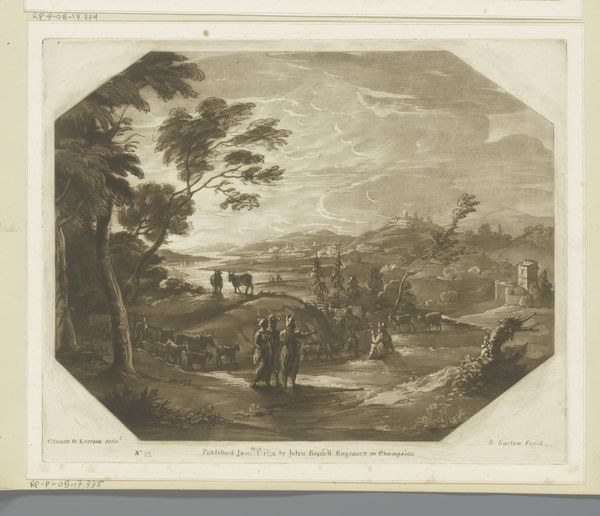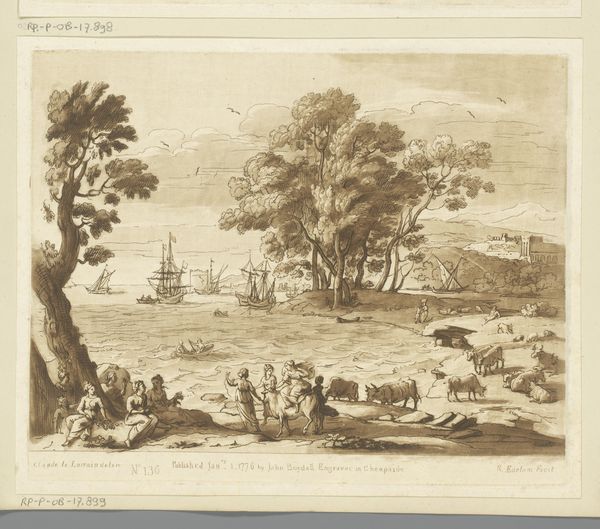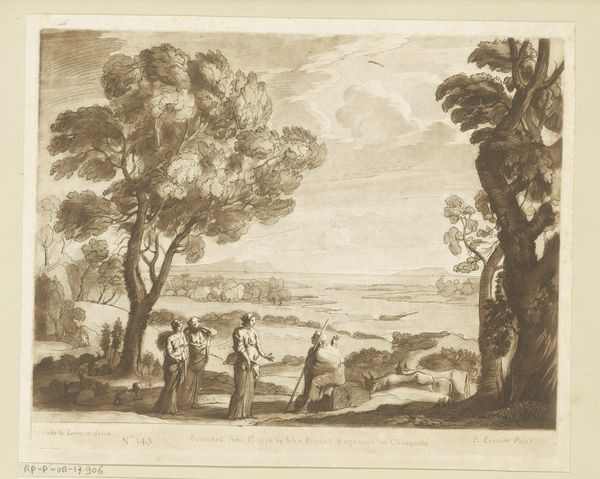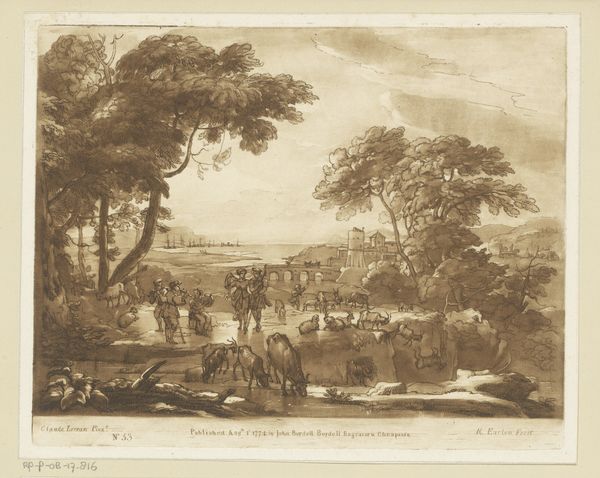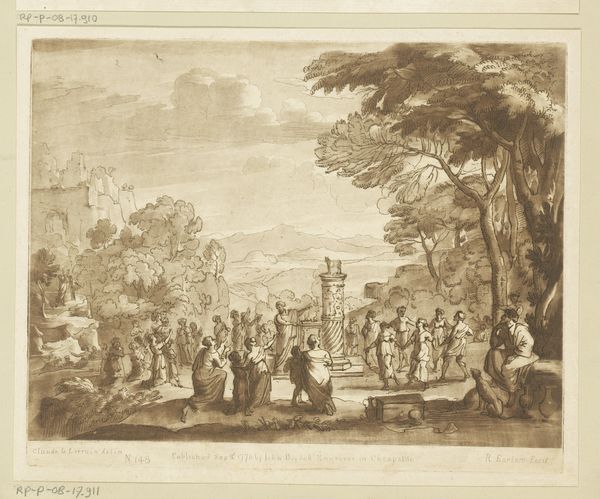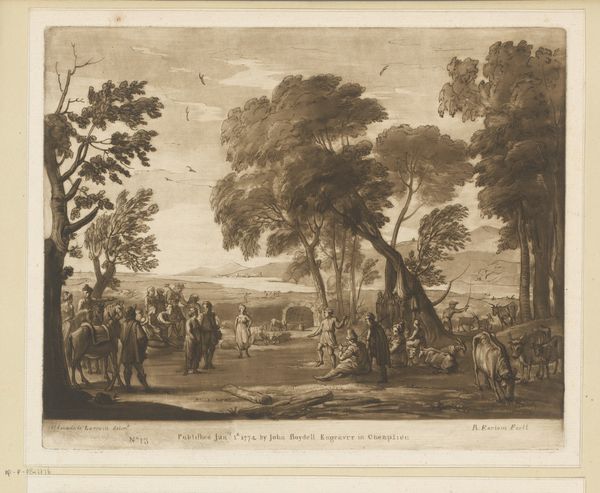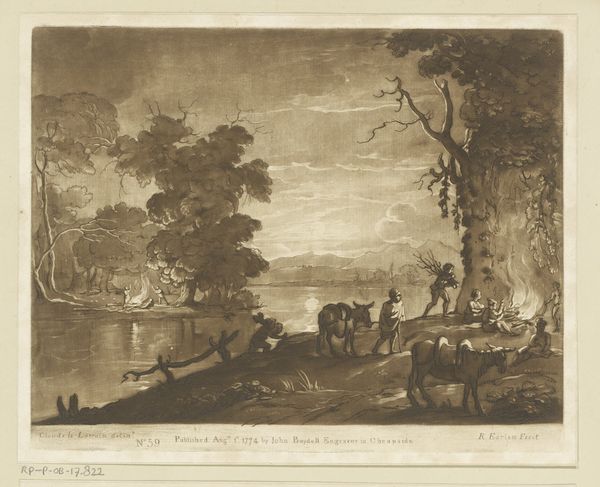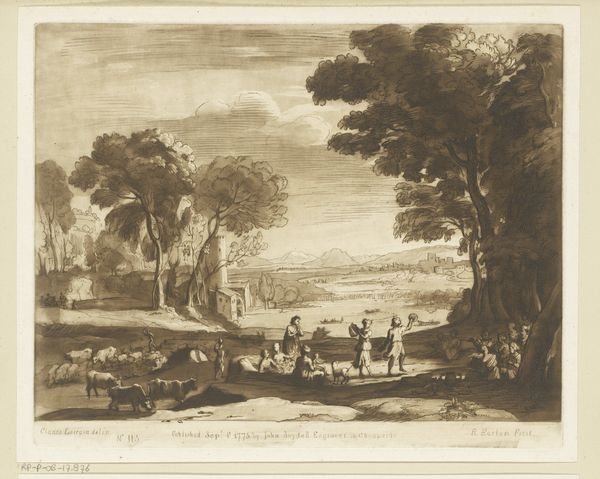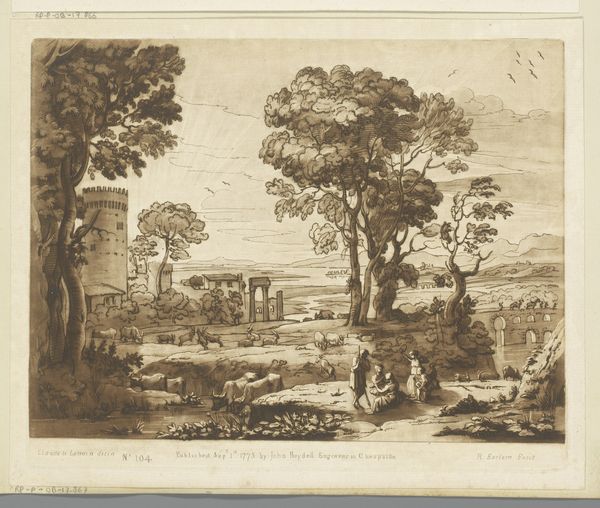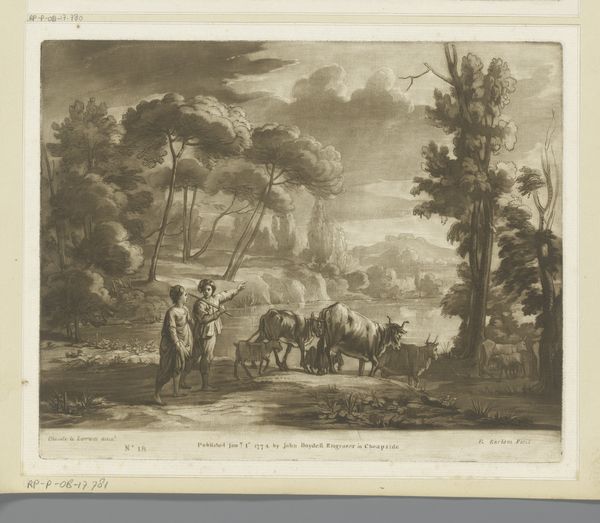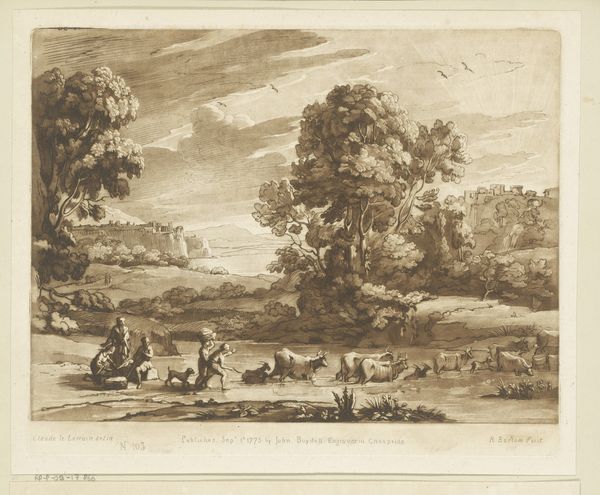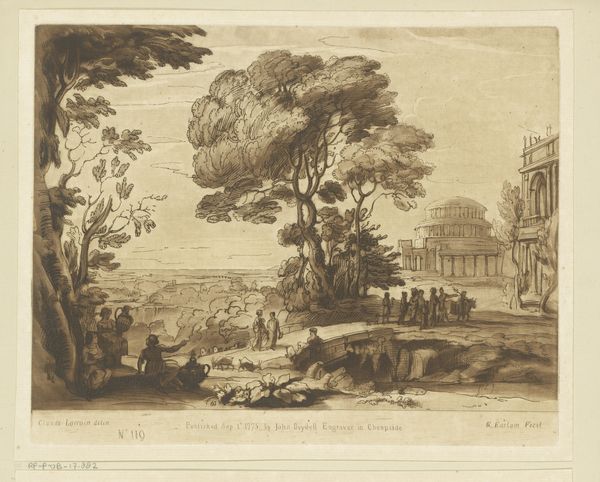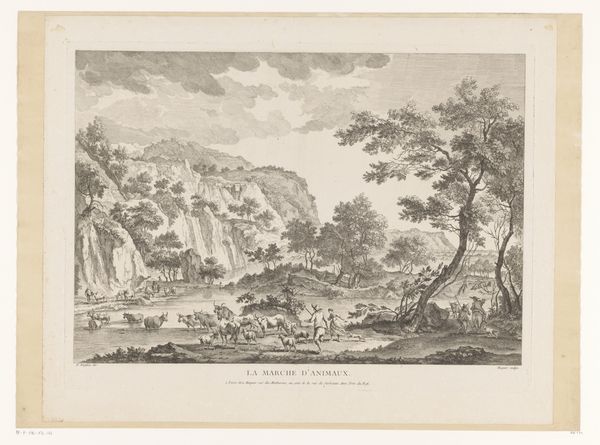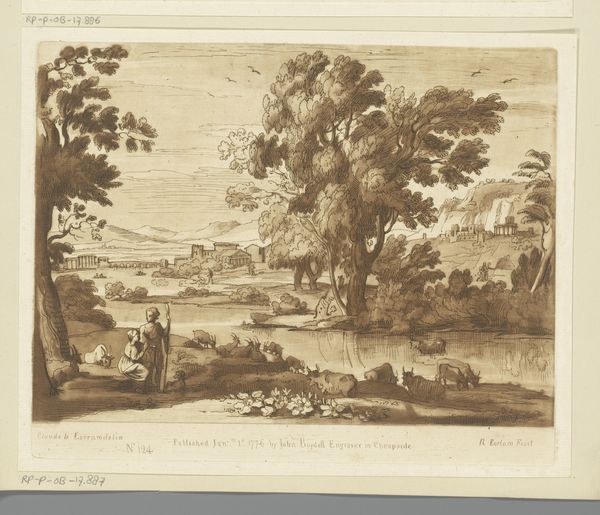
Dimensions: height 207 mm, width 257 mm
Copyright: Rijks Museum: Open Domain
Curator: "Landschap met dansende saters en nimfen"—Landscape with Dancing Satyrs and Nymphs. This is an engraving by Richard Earlom, likely made between 1775 and 1779. Editor: The composition is surprisingly busy! It evokes a sense of Dionysian revelry but within a pretty constrained visual frame. It feels celebratory, though, doesn't it? A release from social constraints. Curator: Absolutely! Satyrs and nymphs are powerful symbols deeply embedded in Western art and imagination. The satyr, the part-man, part-goat figure, has always represented primal instinct. Paired with the nymphs, who represent wild nature, we see the potent symbolism of the untamed forces in nature and humanity. It echoes older themes found, for instance, on Greek vases depicting similar bacchanalian scenes. Editor: I find the presence of the enthroned figures quite fascinating, though. What sociopolitical context does that introduce to this scene of abandon? Does it temper or authorize this "release?" Who is authorized to participate in these scenes, who is seated and watching, and how does this reflect class distinctions or societal norms regarding pleasure and indulgence? Curator: The seated figures add a layer of societal structure to the bacchanal—an acknowledgement that revelry occurs *within* a social framework. Earlom invites us to question the tension between civilized observation and liberated impulse. Notice how the trees in the scene have a human-like form, it seems they're participants and bystanders all at once. Editor: I'm drawn to that contrast, the layering of restraint with freedom in response to, perhaps a specific moral paradigm from the eighteenth century? Curator: Earlom reminds us that these archetypes have resonated throughout history, acting as both cautionary tales and aspirational symbols of liberation. There is continuous human drama between wild desires and ordered society. Editor: This engraving opens up complex questions of how the symbolism of wildness, excess, and freedom have played out across Western cultures and histories, doesn't it? The scene provides a lens for critically examining class, identity, and liberation through a long legacy of representation.
Comments
No comments
Be the first to comment and join the conversation on the ultimate creative platform.
